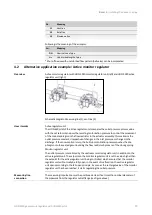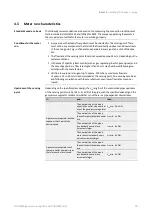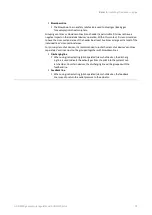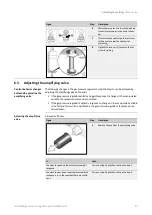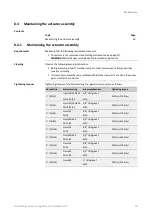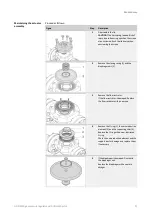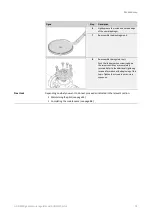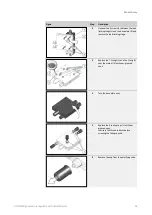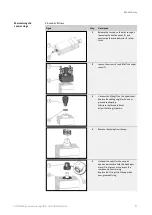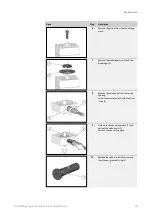
Malfunctions
HON 5020 gas pressure regulator with HON 630 pilot
43
7
Malfunctions
Topic
Page
7.1
Malfunctions
Risk of serious injury posed by pressurized components moving in an uncontrolled manner
when handled improperly.
If not handled properly or in the event of a defect, gas can escape from pressurized compo-
nents under high pressure and cause serious injuries and even death. Before you start work-
ing on these components:
Close all connections leading to the gas-carrying line.
Establish a depressurized status. Residual amounts of energy must be depressurized as
well.
The following table contains a description of malfunctions and abnormalities that may occur
during the operation and lists procedures to correct them:
Malfunction
Possible causes
Correction
The regulator unit does
not open
The pilot is not working correctly
Maintaining the pilot
(see page 53)
The actuator assembly will
not close
Faulty actuator assembly
Maintaining the actuator assembly
(see page 50)
The pilot is not building up suffi-
cient motorization pressure
Maintaining the pilot
(see page 53)
The actuator assembly is
opening/closing too slowly
The pilot’s response speed is not
correct
Adjust the pilot’s response speed,
Adjusting the amplifying valve
(see
page 41)
The actuator assembly’s diaphragm
is faulty
Maintaining the actuator assembly
(see page 50), replace the actuator
assembly if necessary
Low flow rate
The flow restrictor’s openings are
clogged
Check the actuator assembly’s flow
restrictor for impurities and clean it
if necessary
The pressure that needs to
be regulated is not being
regulated
The pilot’s pilot spring is not
compatible with the desired control
range
Remove the pilot spring and check
the color code against the control
ranges listed in the spare parts list
The pilot’s
pilot spring is faulty
Remove the pilot spring and check
it for damage
The sealing pressure is too
high
The control diaphragm is too hard
Check the actuator assembly’s
control diaphragm
Leaks on the outside
The screws and/or fittings were not
tightened correctly
Check the tightening torques
The gaskets are faulty
Check the gaskets for damage
Contents
Pressurized parts
Malfunctions and ab-
normalities

